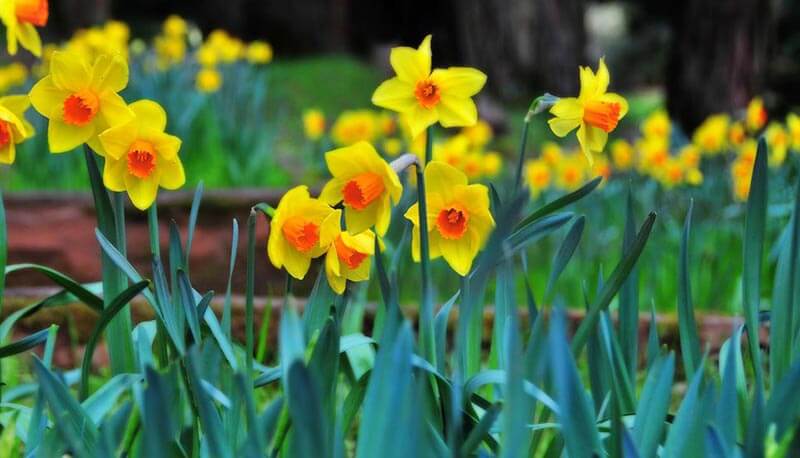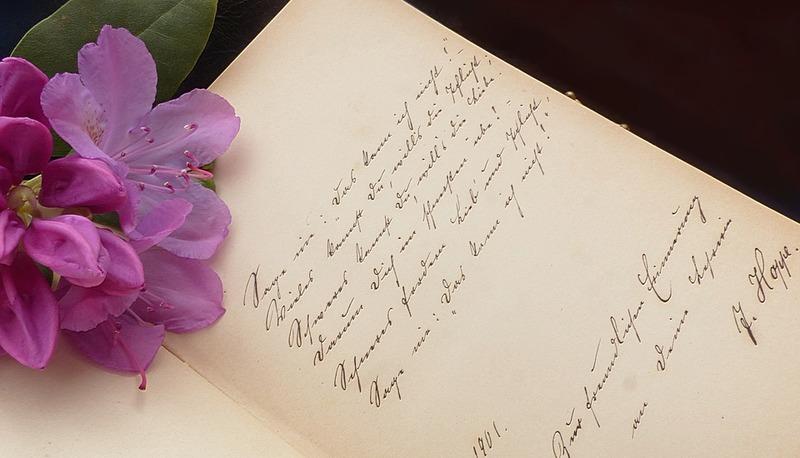Concetti Chiave
- The poem "The Daffodils" by Wordsworth illustrates the deep connection between nature and the poet, highlighting the daffodils as a symbol of nature's voice and beauty.
- Wordsworth portrays the daffodils as a continuous and joyful presence, comparing them to stars in the milky way, emphasizing their endless beauty and vitality.
- The poem captures the transformative power of nature, as the sight of the daffodils uplifts the poet's spirit and brings him joy beyond the immediate moment.
- Wordsworth explores the concept of solitude as a state where the mind can vividly recall and relive the emotions inspired by nature, enhancing personal introspection.
- The structure of the poem reflects the poet's shifting moods, from initial isolation to joy and tranquility, demonstrating the emotional impact of nature on the human psyche.
That floats on high o'er vales and hills,
When all at once I saw a crowd,
A host, of golden daffodils;
Beside the lake, beneath the trees,
Fluttering and dancing in the breeze.
Continuous as the stars that shine
And twinkle on the milky way,
They stretched in never-ending line
Along the margin of a bay:
Ten thousand saw I at a glance,
Tossing their heads in sprightly dance.
The waves beside them danced; but they
Out-did the sparkling waves in glee:
A poet could not but be gay,
In such a jocund company:
I gazed - and gazed - but little thought
What wealth the show to me had brought:
For oft, when on my couch I lie
In vacant or in pensive mood,
They flash upon that inward eye
Which is the bliss of solitude;
And then my heart with pleasure fills,
And dances with the daffodils.
L'influenza della natura
For Wordsworth the principle source of inspiration was represented by the world of nature.  The daffodils is an example of this. In The daffodils is described the flowers that stayed in the bay of his country. These flowers represent the voice of the nature, which is audible except in solitude, when our spirit develops a visionary power and thanks to the nature we know the childhood.
The daffodils is an example of this. In The daffodils is described the flowers that stayed in the bay of his country. These flowers represent the voice of the nature, which is audible except in solitude, when our spirit develops a visionary power and thanks to the nature we know the childhood.
The poet suggests the perfect state of mind; he stay into the contact with the voice of nature as it’s a mystic communication with God.
La struttura della poesia
The poem presents a perfect structure. It’s divided into four stanzas which correspond to the various mood of the poet:
Setting and shock at the sight. He is alone, and feels himself not fully related to the world around him; this mood is broken by the sight of the daffodils.
Description of flowers. The daffodils are part of a universal order, and are set in a natural environment.
Relation between the flowers and the poet: the poet is gay because his mind is once more active, thanks to the feeling that the flower produce in himself.

L'emozione e la tranquillità
Emotion recollected in tranquillity: there is a shift from past to present. Is described the capability of the poet of reorganize the feeling, and recalling it at the future.
The important is not the thought, but the feelings that the vision produce.
Domande da interrogazione
- Qual è la fonte principale di ispirazione per Wordsworth nel poema "The daffodils"?
- Come viene descritta la relazione tra il poeta e i narcisi nella terza strofa?
- Qual è il significato della "visione" dei narcisi per il poeta quando è in solitudine?
- Qual è la struttura del poema e come si relaziona con gli stati d'animo del poeta?
La fonte principale di ispirazione per Wordsworth è il mondo della natura, rappresentato dai narcisi che descrive nel poema.
Nella terza strofa, il poeta si sente felice perché la vista dei narcisi riattiva la sua mente, grazie alle emozioni che i fiori suscitano in lui.
Quando è in solitudine, la visione dei narcisi riempie il cuore del poeta di piacere e lo fa danzare con i fiori, rappresentando la beatitudine della solitudine.
Il poema è diviso in quattro strofe, ognuna delle quali corrisponde a un diverso stato d'animo del poeta, dalla solitudine iniziale alla gioia e alla riflessione tranquilla.







 Accedi a tutti gli appunti
Accedi a tutti gli appunti
 Tutor AI: studia meglio e in meno tempo
Tutor AI: studia meglio e in meno tempo